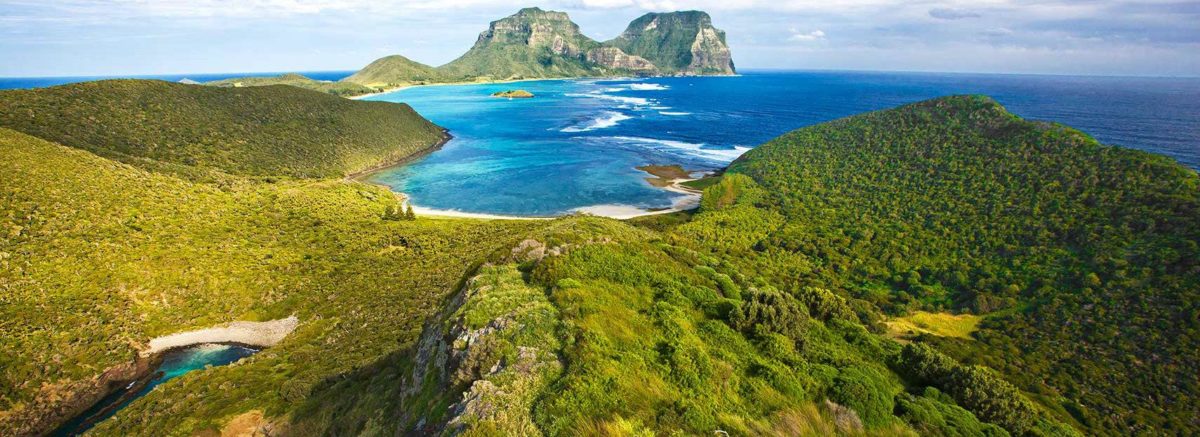Less than a month after FOI documents revealed former environment minister Josh Frydenberg overruled departmental and local support for wind turbine installation on Lord Howe Island, the Australian Renewable Energy Agency (ARENA) has announced a solar + battery storage system for the iconic isle, a solution a long time coming.
When an initial wind and solar + storage hybrid solution fell through, many exasperated locals could be excused for crying out like Austen Tayshus in “Australiana”: “Lord Howe!” But thankfully, an entirely solar solution has revealed itself, and the island’s renewable energy future is now all but secured.
The minimum 1.2 MW solar PV array and battery system with over 3.2 MWh capacity will generate enough power to cover more than two-thirds of the island’s energy needs. The integrated solar + storage system is specifically designed for small and remote locations like Lord Howe, situated 600km off the coast of mainland Australia in the Tasman Sea.
Both the New South Wales (NSW) Government and the Lord Howe Island Board (LHIB) have agreed to support the $11.1 million project, inclusive of $4.5 million in funding to be provided by ARENA, a $5.9 million loan from the NSW Government and the rest covered by the LHIB itself.
The agreement has come two years after a hybrid wind and solar + storage project was blocked by former environment minister Josh Frydenberg. According to ARENA, a supporter of the original hybrid solution, “it was determined during the course of the project that the wind turbine component could no longer be delivered.”
Thankfully, after further feasibility studies in the intervening years, it was identified that solar PV and a battery storage microgrid alone was substantial enough to provide the same benefits as the initial hybrid option.
At the time, many saw Frydenberg’s blocking of the hybrid solution as a purely political manoeuvre. Nevertheless, it appears that the island is getting the best solution in the end as a solar PV installation alone can provide the same energy output without endangering any of the island’s famed birdlife.
The solar PV and storage system will be installed by Photon Energy Engineering Australia, a Sydney-based company boasting over 250 MW of development and experience in large solar power systems.
“Lord Howe Island faces a unique set of challenges in supplying and recovering the costs of providing essential services to its community and in protecting Lord Howe Island’s natural environment,” said ARENA CEO Darren Miller, “We are excited to see a renewable solution will be adopted that will significantly improve the sustainability of the power supply, improve energy security and reduce the impact of future fuel cost increases.”
Miller believes the Lord Howe Island project will provide a solid base of knowledge upon which other isolated and remote islands and communities can forge their renewable futures.
NSW Minister for Energy and Environment, Matt Kean, spoke to the island’s current costly reliance on diesel power, “which is subject to volatility in fuel prices and supply. The environmental benefits of this project are both local and national, as every litre of diesel needs to be shipped to the island.” According to The Guardian, NSW spends $750,000 a year shipping diesel to the island.
The LHIB and island locals are fantastically happy that the renewable project is finally going ahead. LHIB CEO, Peter Adams, looked forward to a time soon when the island will not be so heavily reliant on imported diesel fuel. “We are reducing the environmental impact of our energy supply while also improving energy security,” said Adams, “We set a target to reduce our diesel use by two-thirds, and we believe we will not only meet that target, but potentially exceed it. To achieve this result without detracting from the World Heritage values of Lord Howe Island is a result that everyone should celebrate.”
Construction is expected to commence early next year with a completion date pencilled in for June 2020.
This content is protected by copyright and may not be reused. If you want to cooperate with us and would like to reuse some of our content, please contact: editors@pv-magazine.com.









>>” At the time, many saw Frydenberg’s blocking of the hybrid solution as a purely political manoeuvre. Nevertheless, it appears that the island is getting the best solution in the end as a solar PV installation alone can provide the same energy output without endangering any of the island’s famed birdlife.”
there’s an assumption there that the wind turbine would have endangered the islands birdlife. any evidence for that? the largest conservation org in UK, the Royal Society for Protection of Birds, built a wind turbine to power it’s HQ at a bird sanctuary location, recognising that climate change is a much bigger threat to birds everywhere than sensibly located wind turbines. Needless to say bird preservation is their raison d’être. they do object from time to time where turbine locations are carelessly chosen, but not to entire wind farms or the industry in general.
http://ww2.rspb.org.uk/our-work/rspb-news/news/352864-rspb-aims-to-reduce-carbon-footprint-with-wind-turbine